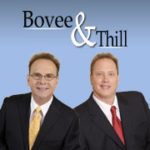 As educators, we pride ourselves on preparing students for the opportunities they will encounter in their careers. This has never been an easy goal with the introduction to business course, given the wide range of topics it needs to address, and the challenge gets more daunting every year as the business world continues to evolve and grow more complex.
As educators, we pride ourselves on preparing students for the opportunities they will encounter in their careers. This has never been an easy goal with the introduction to business course, given the wide range of topics it needs to address, and the challenge gets more daunting every year as the business world continues to evolve and grow more complex.
How do you stay on top of all the changes taking place—particularly if you have limited prep time?
Helping you meet this challenge has always been the driving force behind Business in Action. To prepare the Ninth Edition, we studied every aspect of business, from retailing to finance, to identify the forces and trends that are reshaping the way business works. Here’s a quick look at some of the biggest changes we’re seeing. For some of these, Business in Action is the only text you’ll find that covers them in a meaningful way.
The digital transformation is reshaping every functional area in business, and more than three-quarters of executives say that digital technology will have a “major” or “transformative” impact on their industries. Alert companies are scrambling to reinvent themselves by implementing new business models or optimizing existing approaches. Business in Action is the only leading textbook in this market that helps students appreciate the full scope of this transformation. In fact, our theme for the Ninth Edition is “Thriving in the Digital Enterprise,” and this concept informs the entire text.
Financial services are a great example of how digital technologies are disrupting one sector after another. Did you know that more than 10,000 companies are now active in the fintech arena? We introduce students to five major benefits that fintech is starting to produce, from making financial services more inclusive to enhancing financial decision-making with robo advisors and other artificial intelligence (AI) tools.
The field of marketing has changed so much in recent years that is scarcely recognizable from the old days of the “Four Ps.” The innovations we cover in Business in Action include involving the customer in the marketing process with efforts such as voice of the customer programs, making data-driven marketing decisions (including the all-important challenge of attribution in ad spending), marketing with greater concern for ethics and etiquette, and creating satisfying customer experiences (including creating customer experience touchpoints and the growing practice of social customer care).
Perhaps no aspect of marketing is undergoing as much disruption as the retailing sector. We introduce students to the challenging economics of retailing; discuss how innovations such as mobile commerce, social commerce, and subscription shopping are changing consumer behavior; and take a clear look at the facts and myths of the “retail apocalypse.”
Even as all these changes are happening in the external business environment, many companies are taking a fresh look at what kinds of organizations they want to be and even what it means to be a company. Business in Action explores such topical issues as workplace negativity, safe workspaces, inclusive workplaces and opportunities, the evolving role of HR, the gig economy, and unstructured organizations that rely on social networks and virtual communities.
Sadly, not all recent developments in the business world are positive, of course. The last few years have witnessed stunning ethical meltdowns by some of the biggest companies in the world. The Ninth Edition takes an unflinching look at these lapses and identifies three primary causes of unethical behavior that students need to be aware of: management pressure and corporate culture, a willful blindness to harm, and a sense of ethical and even legal impunity bred in part by the Silicon Valley mentality of “move fast and break things.”
To those of you who already rely on Business in Action to provide your students with the latest coverage of the dynamic field of business, we extend our sincere thanks and continued wishes for success. If you haven’t explored this text yet, we invite you to take a look at its pedagogical features, the range of up-to-date topics it covers, and the value it offers your students. Here’s a video preview and in-depth information about Ninth Edition. We invite you to order a complimentary examination copy today.
Respectfully,
Court Bovee
John Thill
P.S. You might enjoy some of the posts on our Teaching Introduction to Business Blog, too.

 "If you decide to make the leap and launch a business, the people in your life — from family and friends to investors — will all have opinions that they will gladly share with you, sometimes whether you ask them to or not.
"If you decide to make the leap and launch a business, the people in your life — from family and friends to investors — will all have opinions that they will gladly share with you, sometimes whether you ask them to or not.
 "Giant public corporations are major players in the American economy, and their headquarters are scattered across the states.
"Giant public corporations are major players in the American economy, and their headquarters are scattered across the states.
 "While you can
"While you can  "
" "In most of America, earning $100,000 a year could be considered a sign of success. But in many cities, someone making $100,000 a year will just be scraping by.
"In most of America, earning $100,000 a year could be considered a sign of success. But in many cities, someone making $100,000 a year will just be scraping by.
 "Opponents of job outsourcing are making a holiday-season appeal to President Trump: Stop U.S. companies from forcing American workers to train the very same cheaper foreign laborers who will soon replace them.
"Opponents of job outsourcing are making a holiday-season appeal to President Trump: Stop U.S. companies from forcing American workers to train the very same cheaper foreign laborers who will soon replace them.
 "Not the worst, just the most miserable.
"Not the worst, just the most miserable.
 Fast food can be a polarizing topic.
Fast food can be a polarizing topic.